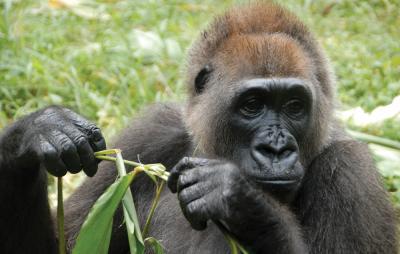Two species of gorillas live in central equatorial Africa. Divergence between the Western gorillas (Gorilla gorilla) and Eastern gorillas (Gorilla beringei) began between 0.9 and 1.6 million years ago and now the two species live several hundred kilometres apart. An international team of researchers including Olaf Thalmann of the University of Turku in Finland and Linda Vigilant of the Max Planck Institute for Evolutionary Anthropology in Germany found that the divergence of Western lowland gorillas and the critically endangered Cross River gorillas (Gorilla gorilla diehli) occurred more recently, about 17,800 years ago, during the Pleistocene era (BMC Evolutionary Biology, April 01, 2011).
An evolutionary model of the two subspecies of Western gorillas was generated using microsatellite genotyping of living gorillas and 100-year-old museum specimens. This data showed that, although Cross River gorillas diverged from Western lowland gorillas about 17,800 years ago, the two subspecies continued to interbreed intermittently. Olaf Thalmann and his co-authors suggest that climate change during the Pleistocene era caused the forests to expand, permitting the Western gorillas to expand their range. When the forest contracted again the gorillas were separated into two populations which began to diverge. Successive rounds of climate change resulted in periods when the two subspecies could interbreed followed by repeated episodes of isolation of the Cross River population.
The model indicates that gene flow finally stopped between the two subspecies approximately 420 years ago. Over the last 320 years there has been a 60% decrease in the numbers of Cross River gorillas causing a loss of genetic diversity within the population. Thalmann said, "The number of Cross River gorillas has continued to decrease, probably due to anthropogenic pressure, such as destruction of their habitat or hunting by humans. There are thought to be fewer than 300 individuals left."

Cross River gorillas today are critically endangered.
(Photo Credit: Nicky Lankester)
He continued, "It is unclear what effect this loss of genetic diversity will have on the long term viability of Cross River gorillas. But, given that this bottleneck occurred so recently, it is possible that if the population was allowed to expand the loss of diversity could be stopped."
Source: Max-Planck-Gesellschaft